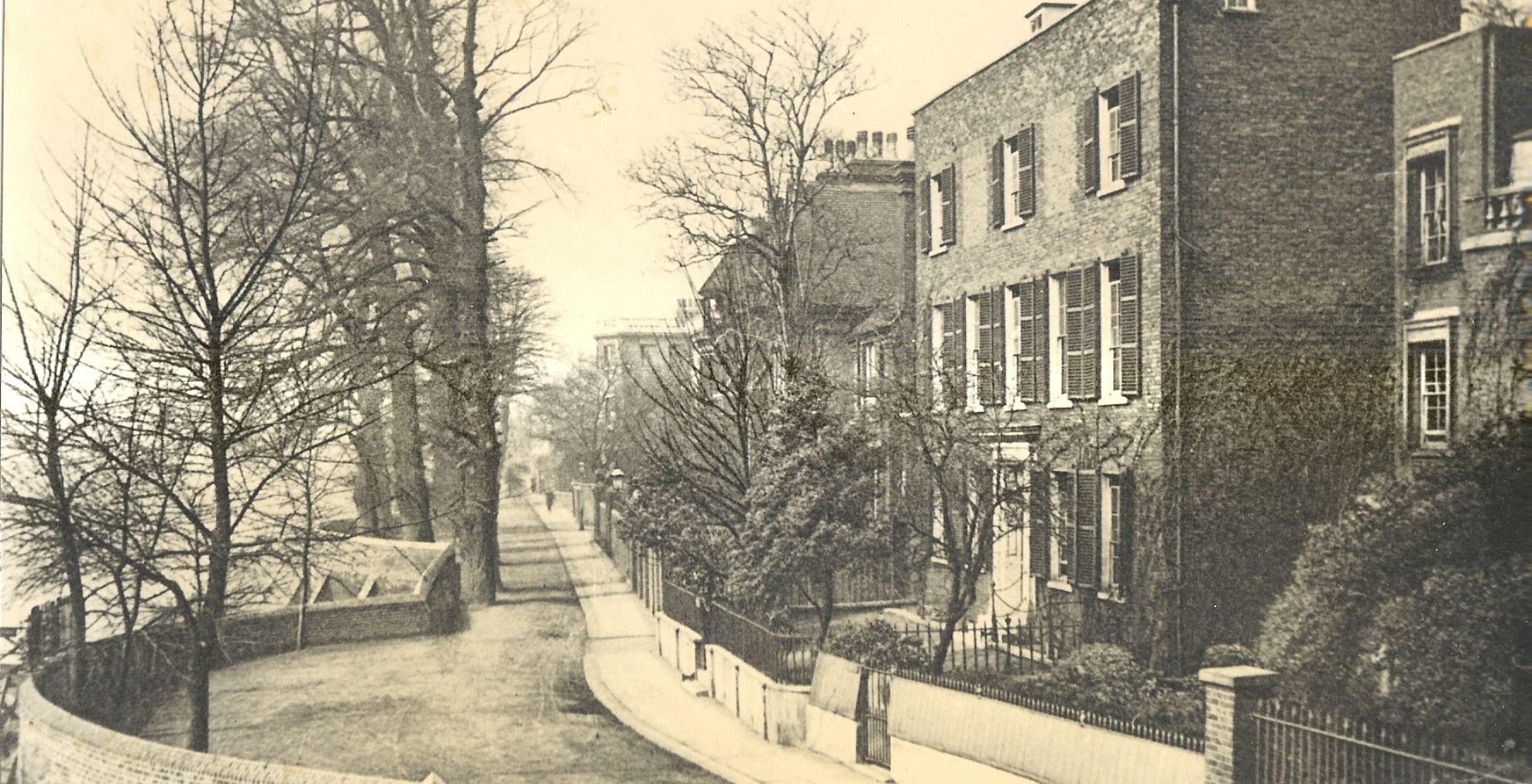We were fortunate to speak with Director of The William Morris Society, Gabriella Esser, to learn more about the life, work, and enduring legacy of one of Britain’s most influential creative minds, William Morris.
Based at the historic Kelmscott House in Hammersmith, Morris’s London home for the last 18 years of his life. The Society continues to celebrate his remarkable achievements in design, literature, and social reform. Gabriella kindly answered our questions, offering rich insight into the man behind the movement and the home that became a hub of artistic and political activity.
Who Was William Morris?
William Morris (1834-1896) is arguably one of the greatest men of the Victorian, or any age. Born in Walthamstow, Morris enjoyed a privileged and idyllic childhood. He had eight siblings and spent numerous hours exploring the nearby Epping Forest as well as reading profusely. This early love of literature and the natural world would permeate his later work.
Morris attended Exeter College, Oxford with the intention of a future career with the church. This was also the aim of his fellow student Edward Burne-Jones. However, the two friends ultimately rejected the priesthood, deciding to dedicate their lives to art instead. After an architectural apprenticeship, Morris moved briefly into the fine arts before pursuing his dream of establishing an artistic fellowship. Morris, Marshall, Faulkner & Company was founded in 1861. The aim was to provide an alternative to the mass-produced, poorly made products of the Industrial Revolution. Renamed Morris & Company in 1875, under Morris’s sole ownership, the company profoundly influenced interior design of the era, with Morris and his colleagues designing wallpaper, textiles, furniture and stained glass windows. Morris & Company traded until 1940, its longevity a testament to the enduring popularity of Morris’s beautiful designs.
However, Morris was far more than a designer. A successful poet and novelist, Morris also founded the Society for the Protection of Ancient Buildings, was a committed socialist and also established his printing enterprise in Hammersmith, the Kelmscott Press, effectively initiating the private press movement. The latter two initiatives took place in Hammersmith, and Kelmscott House was pivotal in the development of the burgeoning socialist movement. Morris fought tirelessly for the cause, campaigning for justice, equality and a fairer society. It is therefore no surprise that when Morris died at 64, he was afforded the accolade of having died of ‘simply being William Morris, having done more work than most ten men’.
What Drew Morris to Hammersmith?
The Morris family had a connection with Hammersmith from the early 1870’s as they were already living in West London prior to their move to Kelmscott House. It was October 1872 when the Morris’s had moved to Horrington House, in Turnham Green. After six years, the family saw the need to move to a larger residence. Their interest turned to this beautiful house on the banks of the Thames. Morris wrote to his wife Jane about the house as Jane was spending the winter in Italy with their daughters Jenny and May:
“…if you could be content to live no nearer London than that I cannot help thinking that we should do very well there: and certainly the open river and garden at the back are a great advantage.”
He remarked on the beautiful garden and the long drawing room, which he said “could be made one of the prettiest in London.”
Morris goes on to describe the positive aspect of the garden and how, if the decision lay completely with him, he would take the house immediately. By this period of house hunting, he had become aware of the difficulty in finding a house nearer the centre of London for a reasonable rent, complaining of prices in Knightsbridge and Kensington costing around £250 a year.
He elaborated further … ‘The long drawing room could be made one of the prettiest in London: the garden is really the most beautiful.’ Ultimately, Jane agreed and William Morris leased Kelmscott House for £85 per year, believing that their friends would visit often ‘if only for the sake of the garden and river’. It was also in close proximity to their great friends, the Burne-Jones’s at their home, the Grange in Fulham. Morris ended his letter; ‘So let us hope we shall all grow younger there, my dear.’

Credit: The William Morris Society
Life at Kelmscott House
Kelmscott House was Morris’s London residence for the final 18 years of his life.
Here he ran Morris and Company, founded the Kelmscott Press, and held Socialist League (later the Hammersmith Socialist Society) meetings in the Coach House. It was during this period that he wrote some of his most famous lectures, including his address on Art and the Beauty of the Earth in 1880 which contains the now infamous phrase.
“Have nothing in your houses that you do not know to be useful or believe to be beautiful.”
Morris conducted his day to day Morris and Company work at his riverside home. He also began experiments with weaving, writing poetry and novels, as well as meeting some of the most influential minds of the time through his socialist campaigning. Kelmscott House was a hub of creative and political activity. However, it was also a family home, decorated with Morris’s extraordinarily elegant furnishings.
There are some wonderful contemporary descriptions and stories about this beautiful riverside home. May, Morris’s younger daughter, recalled:
“We girls, as loyal worshippers in the home circle, thought it not one of the prettiest rooms in London, but just the most beautiful.”
George Bernard Shaw, a regular visitor, recollected that he felt its magic instantly and deeply.:
“There was an extraordinary discrimination at work in this magical house.”
Contemporary photographs illustrate how beautifully decorated Kelmscott House was. The home featured an eclectic interior comprising of Morris and Company furnishings alongside stunning Eastern textiles. Morris designed the double woven woollen Bird hangings in 1878 especially for the drawing room, hanging from picture rail to floor and the original design is, appropriately, in The William Morris Society’s collection, making it a unique and incredibly special object. We also have examples of the wallpaper and furniture that Morris used to decorate his home. These include the stunning pimpernel pattern and a range of the iconic Sussex chairs.

Credit: The William Morris Society
What Remains of Morris’s Original Home?
A number of original features remain at Kelmscott House, including:
- Two beautiful Morris and Company tiled fireplaces in the drawing room
- A section of Trellis wallpaper in Morris’s former bedroom
What is the history of The William Morris Society?
Founded in 1955, the Society has a prestigious provenance as it merged in 1966 with the Kelmscott Fellowship. An organisation founded by May Morris to keep her father’s legacy alive. The establishment of the William Morris Society enjoyed the blessing of Sir Sidney Cockerell, the then only surviving member of Morris’s circle.
The Society exists to promote the life and work of this great Victorian. For those interested in becoming a member they receive:
- Magazines and journals showcasing the prolific output of Morris
- Research on his associates
- Discounts in the shop and for all the events
- Free access to coffee with a Curator talks.
Gabriella Esser shared that they are fortunate to have a wonderful collection of Morris and Company art work. These include wallpapers, textiles, Kelmscott Press books and archive material.

Credit: The William Morris Society
Architectural Changes Over the Years
Alterations have been made since Morris’s time, such as the addition of wall and ceiling plaster decoration in both the drawing and dining rooms by George. P. Bankart, dating from 1910. George Bankart trained as an architect, working alongside Ernest Gimson, and became a specialist in ornamental plaster work.
Photographs show that by 1915 two second floor front windows, previously blocked, had been opened and the louvered shutters to all the windows had been removed. The rendered front boundary wall set with iron railings from Morris’s time, has been replaced with a modern brick wall. The rear elevation has also been greatly altered. When Morris resided at the house, the left hand bay was plain brick work with a six pane sash window to light the staircase behind.
In 1916 George Anderson, a lawyer then residing at the house, employed the architect Philip E Pilditch to carry out a programme of improvements. His most conspicuous addition being the staircase compartment whose external wall was brought forward and faced with mock Tudor timber. At this time the Coach House and stable block was also extended.
However, in 1960 Kelmscott House was added to the statutory list of buildings of special architectural or historical importance and listed Grade II. It was upgraded to Grade II* in 1969. It is situated within the Mall Conservation Area, together with the whole section of river frontage, designated in 1971.

Credit: The William Morris Society
A Working Museum with Living History
Gabriella shared that working at Kelmscott House is:
“A great privilege to be surrounded by beautiful and unique objects within such an historic and atmospheric space. It is a delight to sit in Morris’ garden during the summer months and sit amongst stunning roses and fruit trees.”
Visitors can enjoy the garden in summer, surrounded by roses and fruit trees—a fitting tribute to Morris’s deep connection with nature.
What to Expect on a Visit
The museum welcomes general visitors from Thursday to Sunday from 2pm-5pm, and from September, will extend hours to 10am–4pm. Highlights include:
- The Coach House, where the famous Morris & Company Hammersmith carpets were hand-woven and which was later transformed into the socialist lecture room. Some of the most influential minds of the day spoke in this evocative space, which is now our main exhibition space, showcasing some of the highlights of our collection.
- Private, bespoke tours, run by their experienced guides. These intimate tours for small groups give an unparalleled experience, with explanations of the history of William Morris and his family, with direct reference to their fascinating lives at Kelmscott House.
- View their beautiful exhibition, and stunning artwork from our unique collection, including wallpapers, textiles, Kelmscott Press books and original drawings.
They also mentioned that they are happy to tailor our talks and the objects we bring out form the store to your groups own specific interests.
Admission is free for Hammersmith and Fulham residents and Society members.
Events and Community Outreach
The Coach House is now an exhibition space. Here they aim to highlight the breadth of the museum collection through stunning displays of Morris’s work. This historic space is utilised in full, for the Society’s talks programme, events and valued educational activities for families and schools. They also undertake outreach, from nursery workshops to a variety of talks for groups.
The museum is open to the general public and receives over 4,000 visitors a year. These visitors, who range from those with a specific interest in Morris and his circle, to those with little prior knowledge, greatly value the museum. Admission is also free for Hammersmith and Fulham residents and WMS members.
The learning activities are one of our core objectives. These are highly valued with almost 500 pupils participating in our school programmes every year. Community engagement and involvement with all sections of the community, is also a priority. With strong links in the local and wider community, including a long-established partnership with the Hammersmith and Fulham Macbeth Centre, the museum is open for all.
You also have the opportunity to hire the venue and beautiful historic rooms as well as the garden. What’t more, they will soon become an approved venue for marriages and civil partnerships.
Looking Ahead
In celebration of their 70th anniversary, Gabriella shares that they have exciting plans ahead and can’t wait to welcome you. These plans include:
- Expanding touring exhibitions and educational offerings
- Launching a permanent exhibition in September
- Hosting their first Arts & Crafts Fair next summer
- Expanding their gift shop product range
- Creating exciting new resources and special family-friendly areas within the museum and garden
We are delighted to have three riverside car parking spaces available for hire, please do contact Gabriella if you are interested in hiring the spaces on either a short or long term basis.
Interested in Becoming a Member?
If you are interested in becoming a member you can join and find out more here.
Membership includes:
- Three issues of the Society’s magazine
- Two issues of their journal per year
- Free museum entry
- Shop and event discounts
- Access to exclusive talks
- Early notice of exhibitions and activities
Whether you’re a lifelong admirer of Morris’s work or a newcomer inspired by his ideals, Kelmscott House offers a rare glimpse into the legacy of a man whose influence continues to shape art, politics, and design today.
Visit the website here or follow their Instagram here for more information.
Thinking of moving to Hammersmith?
We are your local estate agents in Hammersmith, offering expert advice and a tailored approach to buying or renting property in the area. Contact our Hammersmith estate agents today to discuss any property-related plans.
Alternatively, if you’d like to learn more about living in this vibrant part of West London, read our living in Hammersmith area guide.





